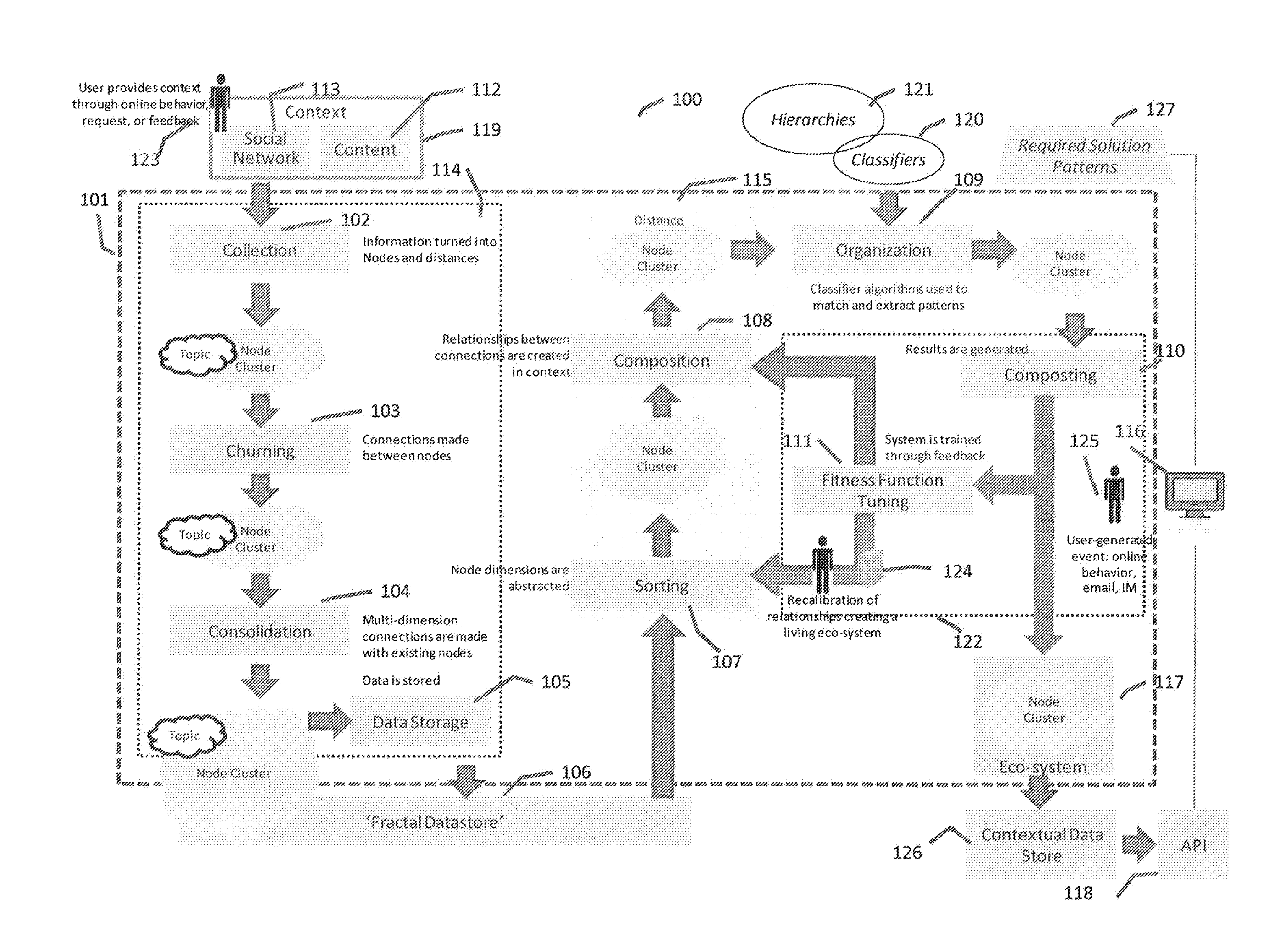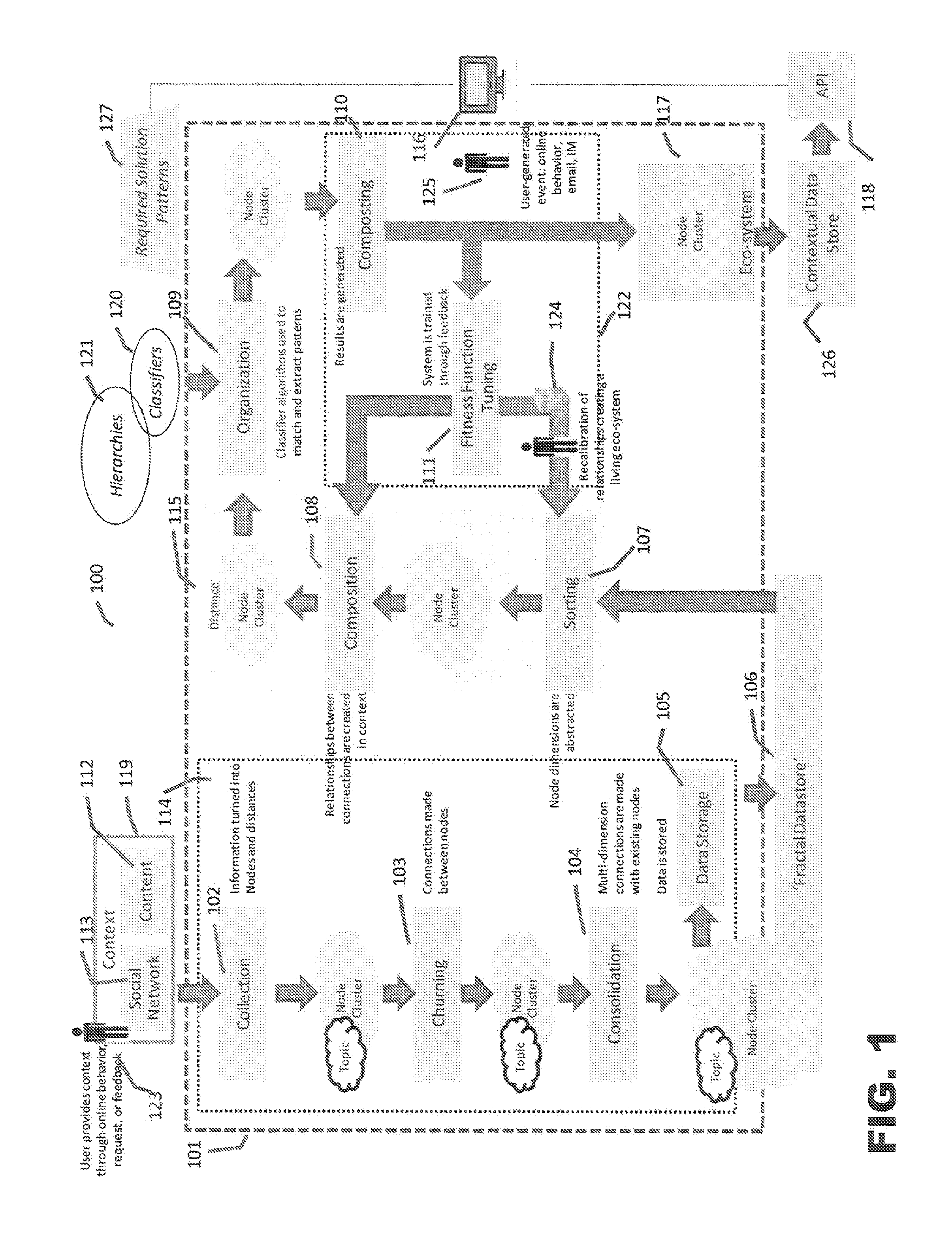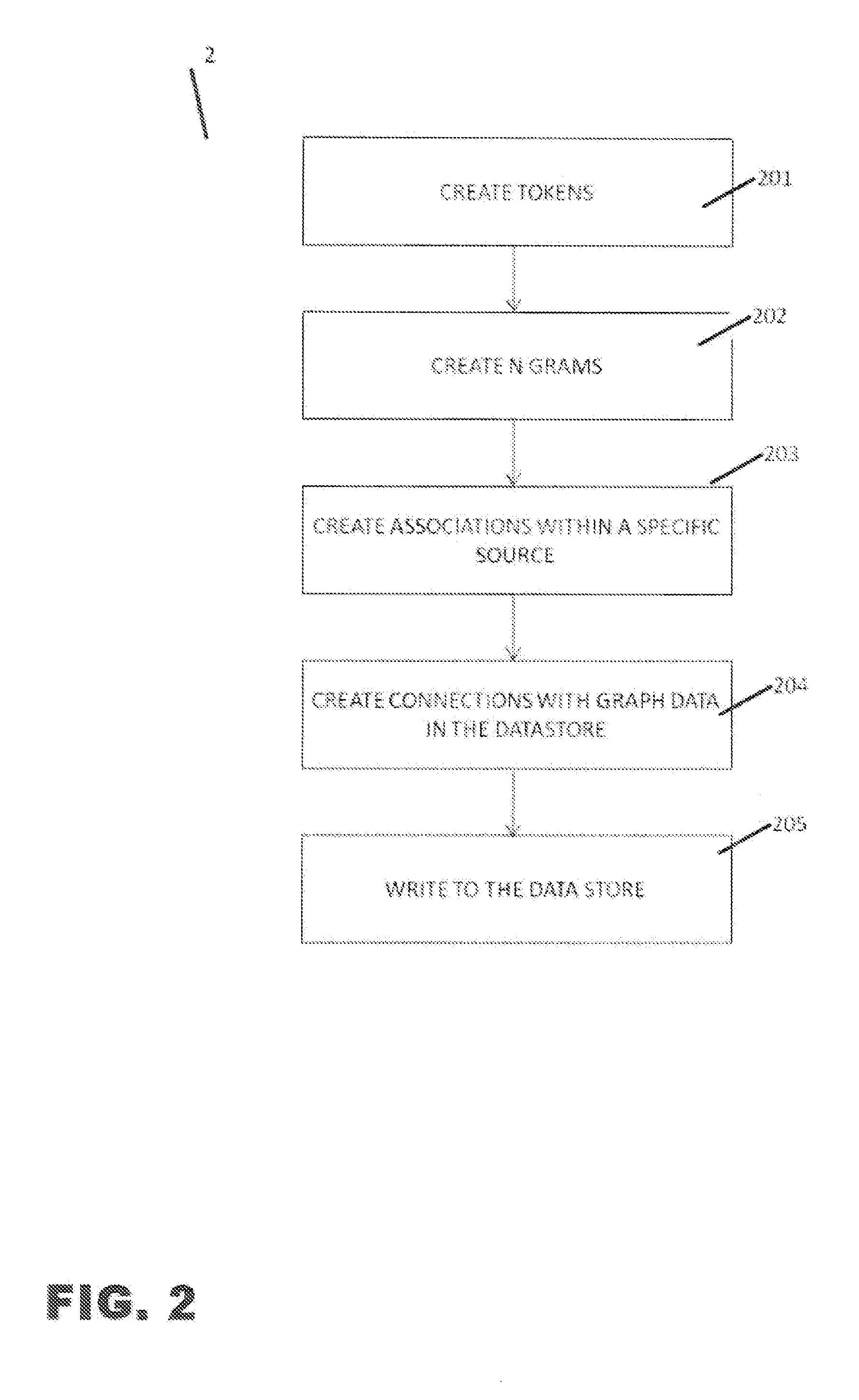Methods and systems for auto-generating models of networks for network management purposes
a network management and network technology, applied in computing models, data switching networks, instruments, etc., can solve problems such as morphing and evolving established business and social processes, insufficient traditional system-level integration, and inability to fully integrate,
- Summary
- Abstract
- Description
- Claims
- Application Information
AI Technical Summary
Problems solved by technology
Method used
Image
Examples
first exemplary embodiment
[0078]A first exemplary embodiment of the present invention comprises a method including the steps of (a) processing descriptive information that is in a digital format and describes each network; (b) establishing relationships between the processed information and any other information in a computer system datastore; (c) establishing the degree the processed information and the relationships conform to some predetermined pattern; (d) establishing connection weights and other attributes based on the relationships and pattern match for each computational algorithm; (e) using computational algorithms for determining which executed algorithms' patterns best fit against some criteria; (f) providing feedback on the correctness or incorrectness of identified patterns and using learning algorithms for optimizing weights, relationships, and patterns; (g) executing computational algorithms against the processed information and their connections for the purposes of identifying relationships a...
second exemplary embodiment
[0080]A second exemplary embodiment of the present invention comprises method of computing to address a predetermined computing requirement for extracting, creating, and merging models of networks. This method comprises steps of (a) processing digital information for each network; (b) establishing the connections between the processed information and any other information in the system datastore based on one or more algorithms; (c) executing computational algorithms against the processed information and their connections for the purposes of identifying relationships and patterns; (d) executing computational algorithms for establishing the best lit of relationships and patterns against some criteria; (e) providing feedback on the correctness or incorrectness of identified patterns and using learning algorithms to reestablish the weights, relationships, and patterns; (f) executing computational algorithms against the processed information and their connections for the purposes of iden...
third exemplary embodiment
[0082]A third exemplary embodiment of the present invention comprises a method of computing to address a predetermined computing requirement involving the extraction, management, and merging of models of networks. This method comprises steps of (a) processing digital information; (b) establishing the connections between the processed information and any other information in the system datastore based on one or more algorithms; (c) describing those connections across n number of dimensions; (d) establishing the weights of the connections between processed information and any other information in the system datastore; (e) executing computational algorithms against the tokens and their connections for the purposes of identifying relationships and patterns; (f) executing computational algorithms for establishing the best fit of relationships and patterns against some criteria; (g) providing feedback on the correctness or incorrectness of identified patterns and using learning algorithms...
PUM
 Login to View More
Login to View More Abstract
Description
Claims
Application Information
 Login to View More
Login to View More - R&D
- Intellectual Property
- Life Sciences
- Materials
- Tech Scout
- Unparalleled Data Quality
- Higher Quality Content
- 60% Fewer Hallucinations
Browse by: Latest US Patents, China's latest patents, Technical Efficacy Thesaurus, Application Domain, Technology Topic, Popular Technical Reports.
© 2025 PatSnap. All rights reserved.Legal|Privacy policy|Modern Slavery Act Transparency Statement|Sitemap|About US| Contact US: help@patsnap.com



